Feminist Criticism of Society and Comic Books’ Past
In 1940, prominent American psychologist, inventor, and comic book enthusiast William Moulton Marston became frustrated with what he described as the “unfulfilled potential of the comic book medium” 1. Max Gaines, the comic publisher who owned two of the companies that would merge to form DC Comics, suggested to Marston that he should create a female superhero. A year later, in December 1941, Wonder Woman was born in the pages of All-Star Comics #8.
Since those days of the Golden Age, women in comics have faced decades of adversity. A temporary need for feminist patriotism during World War II gave rise to the first heroines of the medium, and society’s lack of need for feminism after the war led to their decline of importance. Though this phenomenon may have been incredibly unfortunate for the women on the pages, it is fortunate for feminists and sociologists today that the stories of comics have been so well preserved, as comics are a valuable resource for analyzing historical attitudes about women. From hundreds of thousands of pages of comics, we can analyze the role of women and the social attitudes towards women at the particular point that a story is published.
Fulfilling Society’s Need
Wonder Woman was conceived through the absence of women in illustrated fiction, but she was not the first female comic book star. There were other mainly short-lived and irrelevant female superheroes before her, and females, by-and-large, were represented as being either a sidekick or a “damsel in distress”—an objective to be saved—as can be seen in very early versions of Clark Kent’s love interest Lois Lane. One other woman of comics whose stories are still published today also had her first appearance in December 1941: Betty Cooper, one half of Betty & Veronica, two points of a love triangle who have fought over Archie Andrews for over seven decades.

The simultaneous births-on-paper of Wonder Woman and Betty Cooper provide an intriguing juxtaposition that we can analyze: one character was born from one feminist’s perspective on the absence of strong women, intent on challenging the status quo, while the other was created to be a status quo-friendly and relatable character for a target demographic: preteen girls. Regarding the social purpose of Wonder Woman, Marston wrote the following in a 1943 article of The American Scholar:
Not even girls want to be girls so long as our feminine archetype lacks force, strength, and power. Not wanting to be girls, they don’t want to be tender, submissive, peace-loving as good women are. Women’s strong qualities have become despised because of their weakness. The obvious remedy is to create a feminine character with all the strength of Superman plus all the allure of a good and beautiful woman. 2
Though the terms he chose might be considered objectionable by feminists today, we can discern from this the societal need that Wonder Woman was to fill. In the same month as her first appearance, America was brought into World War II by the Japanese attack on Pearl Harbor. There was a sudden need for independent and strong-willed women to fulfill duties that men typically fulfilled while the men were away at war, and as such, Wonder Woman fulfilled a similar role similar to the iconic wartime character Rosie the Riveter. Wonder Woman often found herself in the bondage and chains of men who wanted to suppress her, and only her determination to break those chains would set her free. This was meant to arouse determination in the women who may read these stories and instill in them the idea that they too could break free of their own bonds.
And on the other hand, we have Betty Cooper. Pep Comics and Archie, the two books in which she and Veronica Cooper were featured in their early years, were marketed directly to girls aged 6-13. Their first years were not affected in any way by the war, and life in their comics just went on as usual if a war was not even happening. This is not surprising, as reaching out with such storylines would not be relatable to such a young demographic. Betty and Veronica’s lives were that of a typical 1940’s teenaged girl. Hobbies included cooking, fashion, and making their own clothing. Recreation would be had by driving around the block. More famously, the two constantly battled over Archie’s attention and the two often seemed only to exist to serve as prospective love interests.
What can we infer from this? When a need for strong women was created by the war, Wonder Woman served to rouse them from their homes and into shipyards and factories, while their daughters sat at home reading Archie. One could theorize that the writers and publishers of Archie knew that the war would not last forever, and that the need for strong women would be short-lived. By the time the war was over, girls who had grown up idolizing Betty and Veronica’s exploits in Archie would have little reason to deviate from the pre-war status quo.
The Silver and Bronze Ages
In response to a public worried that comic books would devolve into stories of horror and perversion, the Comics Code Authority (CCA) was formed in 1954 as an alternative to government regulation to let comics publishers self-regulate the content of their media. The code stated that good must triumph over evil, that government institutions may not be painted in a bad light, that any “sex perversions, abnormalities, and illicit sexual relations” were not to be printed, and that any depictions of “violence or lurid gruesome illustrations” would be banned 3. Any publisher creating a comic must submit the book to the CCA in order to show that their books were code-compliant. Any book not found to be in compliance could not display the code’s Official Seal on its cover, something that many comics retailers required.
In response, DC Comics created a policy of its own which stated that “the inclusion of females in stories is specifically discouraged. Women, when used in plot structure, should be secondary in importance, and should be drawn realistically, without exaggeration of feminine physical qualities” 4. Given that women in that time were typically not writers anyway, and that the creative staffs of both DC and Marvel were 100% men, the code inherently discouraged any portrayals of women and nobody cared to protest. As a result, female readership of superhero-based comics underwent a rapid decline with most women opting for romance comics, which were just as popular as superhero comics at the time.
The Thawing of Women
Over the next forty years, this institutionally-mandated female exclusion would lead to a phenomenon that would go largely unnoticed by anyone except for the few women left reading comics: Women were at first only used as background devices, but over time, those women who did break through the barrier of irrelevance often found themselves meeting a gruesome end. Many feminist movements arose in the late 90s and early 2000s to raise awareness to this trend.
One came in the form of a list by then-enthusiast and now-comic writer Gail Simone titled Women in Refrigerators. In 1999, Simone wrote a letter to dozens of comic writers and executives requesting their insight on “superheroines who have been either depowered, raped, or cut up and stuck in the refrigerator. […] Some have been revived, even improved, although the question remains as to why they were thrown in the wood chipper in the first place” 5. The title of her letter comes from an incident in Green Lantern #54, in which Green Lantern finds that his girlfriend had been killed by a villain and stuffed into the fridge.

Among the unlucky on the list is Gwen Stacy, Peter Parker’s dead girlfriend; the miscarriage of the Invisible Woman’s second child; and the first Ms. Marvel, who had run the gamut of being “mind-controlled, impregnated by rape, powers and memories stolen, cosmic-powered then depowered, and alcoholic” 6. The point that Simone made was that women in comics were being tortured and punished in ways wholly disproportionate than their male counterparts. Moreover, they were objectified to such a degree that their primary importance was to be killed to punish the males in their lives. Simone only included superheroes and famous characters on her list—another list could be made featuring the women who were introduced only to be background characters and companionship for the males for a time while they waited for their inevitable slaughter.
The Girl Wonder
Writers in the industry had a cool reception to Simone’s letter. Many admitted that they were not mindful of the phenomenon but conceded that they understood her point, while others responded in an almost defensive manner. A few wrote back that several male characters had met grisly ends as punishment for male characters, and one cited Jason Todd as his example—otherwise known as the second Robin. After the original Robin, Dick Grayson, left Batman’s side to become an independent superhero known as Nightwing in 1983, Jason Todd took over the title of Boy Wonder. Five years later in 1988, Todd found himself kidnapped by the Joker, beaten by a crowbar, and left to die in a warehouse with a time bomb. Batman arrives too late and cannot save him. A large funeral is held and Batman is wracked by guilt for many issues afterward, even setting up a memorial display in the Batcave featuring Jason’s uniform that serves as a constant reminder that he must stop the Joker. In short, Bruce Wayne is severely affected by this death for many years.
Tim Drake would inherit the title of Robin until 2004, when his father eventually forces him to hang up his uniform and go to boarding school for a while. In response to this, Tim’s girlfriend Stephanie Brown (also known as the superheroine Spoiler) takes the opportunity to craft her own Robin uniform, sneak into the Batcave, and convince Batman to train her as the new Robin. Four issues later, Batman would decide that she is too unskilled for the role and “fire” her. Stephanie, undeterred, would steal one of Batman’s plans and attempt to carry out one of his tasks in an attempt to prove herself. That plan would go horribly wrong, and Stephanie found herself kidnapped by the Black Mask and brutally tortured with a power drill. Batman arrives in time to find her alive, but she would eventually die on a hospital bed from her injuries.

Batman’s response to her death, in comparison to Jason Todd’s is brief and almost non-existent. Life would go on just as usual for Batman and Bruce Wayne only a few issues later, and many fan websites now do not even mention Stephanie as ever being a Robin in Batman lore. An activist movement rose when a feminist group calling themselves “Project Girl Wonder” took exception to several inconsistencies between the deaths.
First, while Jason was portrayed as being heroic in the last moments of his life, Stephanie is portrayed as being helpless and her torture has sexual overtones. Second, they took exception to the fact that her death was celebrated with a Black Mask action figure, in which two accessories happen to be the power drill and hacksaw that he used to get her to talk. Third, after the torture, Batman finds her body “splayed and twisted unnaturally with an angle that emphasizes her figure, with her uniform ripped on the breasts” 7. Fourth, Batman and Tim forget about her as soon as she is gone. And fifth, perhaps most importantly, Stephanie’s death was not immortalized with the same Batcave memorial that Jason Todd received. Their cause stirred such a backlash that DC eventually retconned her death (as comics usually do) and Stephanie Brown eventually came back to don the cowl of Batgirl.
The two examples cited here were only two of a few of a very vocal minority of comic readership, but two that made a lasting impact on where comics would emerge from after the 1990s.
Today
In 2011, in an effort to appeal to new readers and expand its readership, DC Comics rebooted its continuity with an initiative called the “New 52.” Soon after its launch, a report by DC Comics 8revealed a 93% male/7% female gender gap among New 52 readership. However, as of September 2015, an article by The Guardian 9 reported that, based on a survey of Facebook “likes” and social media activity, 42.8% of comic fans are female. DC’s low female readership at the time could be attributed to backlash from female comic fans when New 52 launched, as only 1% of creators 10 at the time of launch were female. As of January 2017 that number has risen to 19.4% 11, with 147 women out of 759 total creators.
In response to feminist activism and criticism, Spawn creator Todd McFarlane defended his craft. In 2013, while promoting the PBS documentary “Superheroes: The Never-Ending Battle,” McFarlane said that “The vast majority of dudes [are] doing this high testosterone sort of storytelling, and so we put our fantasy on the plate on the pages.” He went on to explain that, as comics are historically male-driven, superhero comics may not be the best medium to empower women: “I’ve got two daughters, and if I wanted to do something that I thought was emboldened to a female, I probably wouldn’t choose superhero comic books to get that message across.”
Alyssa Rosenberg of ThinkProgress wrote a response to McFarlane’s comments, refuting his arguments that she construed to be a defense of biological determinism:
These arguments ignore that superheroes don’t actually exist, and that the production of superhero comics is not actually a biological function determined by whatever bodies we’re born with. A lack of equality in the nobility’s ranks in the medieval military hasn’t kept Tamora Pierce from writing dozens of fantasy novels involving female knights, because that is a thing that you can do in fiction. If superheroes actually existed, and their ranks were exclusively male, writing fantastical fiction to consider how women might handle that sort of power, and how the world might react to their use of it would be a perfectly legitimate subject for superhero fiction to explore. 12
Today, incidents of sexism do still happen, though they are noticed quickly and sometimes stopped due to social media backlash. The most recent example came in March of 2015 when DC planned to release a Batgirl variant cover featuring the Joker. In 1988, Batgirl (Barbara Gordon) was shot in the spine by the Joker to punish her father, Gotham Police Commissioner Gordon, in the Batman graphic novel The Killing Joke. The incident left her in a wheelchair for over a decade until the New 52, when DC gave the cowl back to Barbara.

The moment is obviously a very traumatic one in her life, but Barbara has grown to be one of the most celebrated women in modern superhero lore. When DC announced that they were releasing a cover featuring a tearful Barbara helpless in the Joker’s arms (who happens to be wearing the same outfit he wore when he shot her 28 years ago), there was a resounding negative response. The hashtag #changethecover became a rallying cry within online comic communities and a massive boycott of all DC Comics was threatened by feminist communities. Within two days, DC announced that they were pulling the cover.
Since those dark ages of the 90s, more and more female staffers have joined the ranks as writers and artists. There is still an “old guard” of veteran writers and executives that are vocal about their wishes of maintaining the status quo of yesteryear, but there are an equal amount of talented and beloved newcomers that provide a counterbalance. Though both still exist, objectification and sexualization of women have been greatly minimized in today’s comics. Thanks to independent publishers and crowd-funded Kickstarter campaigns, women are a growing voice in the creative process of comics and can disperse their work to a much larger audience.
As stated earlier, comics are a wonderfully-preserved medium that are perfect for feminist critique because the treatment that women receive in comics can be easily traced to the role that society expected women to follow at that point. Later on in the 1990s, it shows where a medium would evolve to if women had no say in their production or writing over a period of 50 years. Men were left alone to control the medium and women were pushed to the background, used solely as sexual objects disposable fodder to punish the male characters in their lives. And it wasn’t until women started taking notice of these inconsistencies and became a vocal nuisance that the publishers began to change their ways.
Just as comics preserved the diminutive role that women served in the mid-20th century, it preserved a remarkable turnaround that shows how much improved a medium can grow when women have a vocal role in its creation. Feminist theory states that women’s viewpoints and input have been silenced as they have not had an active role throughout history, and that history is worse off for it. If anything, comics are a perfect example that proves that theory right.
Works Cited
- Lyons, Charles. “Suffering Sappho! A Look At The Creator & Creation of Wonder Woman.” ComicBookResources. N.p., 17 Aug. 2016. Web. 06 Mar. 2017. ↩
- Marston, William Moulton. “Why 100,000,000 Americans Read Comics.” The American Scholar Vol. 13, issue 1. 1943. ↩
- “Comic book code of 1954.” Wikisource. Web. 06 Mar. 2017. https://en.wikisource.org/wiki/Comic_book_code_of_1954 ↩
- Uslan, Michael. Batman in the fifties. New York: DC Comics, 2002. Print. ↩
- Simone, Gail. “Women in Refrigerators.” Web log post. Mar. 1999. Web. 06 Mar 2017. http://lby3.com/wir/ ↩
- Simone, Gail. “Women in Refrigerators.” Web log post. Mar. 1999. Web. 06 Mar 2017. http://lby3.com/wir/ ↩
- Borsellino, Mary. “Project Girl Wonder.” Project Girl Wonder. Feb. 2006. Web. 06 Mar 2017. http://girl-wonder.org/robin/ ↩
- “‘New 52’ Appealed to Avid Fans & Lapsed Readers.” ICv2: The Business of Geek Culture. 09 Feb. 2012. Web. 06 Mar. 2017. http://icv2.com/articles/comics/view/22113/new-52-appealed-avid-fans-lapsed-readers ↩
- Barnett, David. “Kapow! The unstoppable rise of female comic readers.” The Guardian. Guardian News and Media, 18 Sept. 2015. Web. 06 Mar. 2017. https://www.theguardian.com/books/2015/sep/18/female-comic-book-readers-women-avengers-a-force ↩
- Collins, Sean T. “Listen to Dan DiDio respond to the fan who told DC to ‘hire women’.” ComicBookResources. Aug. 2016. Web. 11 Feb. 2017. ↩
- Johnston, Rich. “Gendercrunching November 2016 – Marvel, DC, Boom, Titan, Dynamite And Valiant.” Bleeding Cool. 09 Feb. 2017. Web. 11 Feb. 2017. ↩
- Rosenberg, Alyssa. “Legendary Comics Creators Dismiss Sexism Critiques, Say ‘The Comics Follow Society. They Don’t Lead.'” ThinkProgress. 08 Aug. 2013. Web. 25 Feb. 2017. ↩
What do you think? Leave a comment.
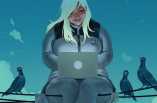

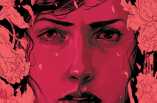
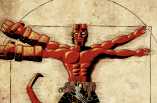

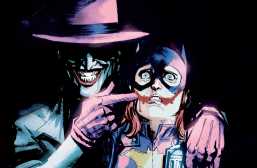
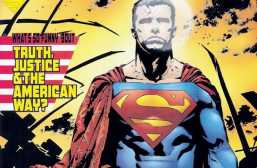
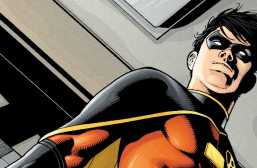
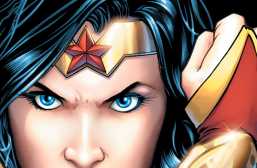
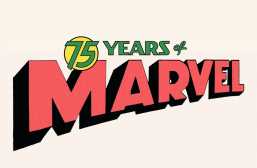
There are certain characters, even though written by men, have some resonance with feminist geek women (like myself)- especially in the US. Wonder Woman was probably the first along with Uhura in the original Star Trek and “Trixie” in the “Speed Racer” dubbed anime. All three fictional women were intelligent and didn’t ‘hide that fact, had independence within their social structure and were not passive damsels in distress. In the later 70’s-early 80’s Star Wars Princess Leia was added to that list, then in the later 80’s all the female characters on Star Trek:Next Generation (yes, even Troi), the 90’s brought us Dana Scully and Buffy Summers, and even in the rather retrograde gender attitudes of Doctor Who’s 21st century revival there was Martha Jones and River Song. River Song in particular, had a strong feminist resonance for grown up female Classic Whovians- now old enough to have had long term relationships. The disillusionment of the fantasies women are still taught in our culture, the struggle to deal with that while still loving your partner, etc..
One day females are simply going to have to let go of these wild delusions & fantasies of having STRENGTH & POWER over men. In fact – ALL of the female characters you mentioned – were EMPOWERED by the MEN around them, and existed within the FRAMEWORK that was established by those men! Wonder Woman is the WORST example to use, because although TODAY she is depicted as a (STRONG INDEPENDENT WOMAN) on par with SUPERMAN, in her ORIGINS… she was SOLELY PRESENTED as a BDSM character for young boys to toss one off to! lol.. She was ALWAYS tied up by her enemies into sexually vulnerable positions. She was always getting spanked lol.. hog-tied… and strapped down to tables. LOOK IT UP!! Type in (ORIGINAL WONDER WOMAN BONDAGE). You’re welcome! 🤗
Uhura was another one… She was simply the “Communications Officer” on the ship – she did NOTHING on the actual missions. It should also be noted that – as with amost EVERYBODY in Hollyweird… ESPECIALLY back then, her stardom wasn’t FREE! It’s a well known fact that she was banging Gene Roddenberry! She was also “used” to act out the first “interracial kiss” on National TV. She had to kiss Captain Kirk… which doesn’t SOUND like such a big deal right? Except when you listen to HER VERSION of events, and she reveals that they kept shouting CUT…. DO IT AGAIN!! and she had to kiss him over & over – in front of the whole staff – ON SET.. over 30x!!!
Now those are the FACTS, but on a strictly PERSONAL level – I AGREE with ALL OF YOU that all of the above is SICK SH*T!! I think that not only it have been BANNED, but all of the people making & distributing that garbage should have been arrested!!! They were CLEARLY sicko-perverts that needed to be watched 24/7. But replacing them with half-naked men & women with rainbow colored hair and covered in glitter – talking about sex to children is ALSO sick & perverted, and THEY TOO should be locked away!! See.. You can’t assault ONE form of delusional perversion, but then give OTHER FORMS of delusional perversion – free reign! You can’t have it both ways… either ALL of the sickos get dragged away – or NONE of them do, and you have HELL ON EARTH!!
I can go on & on with EACH character you named, but… you get the idea.. NOT ONE was (STONG & INDEPENDENT).. that’s a wild female fantasy that they can never fulfill! ..👋😊
Thanks for sharing.
I still remember a lesson in feminism given out by Black Canary, some time in the late 70s. A male villain had cornered her in his evil hideout, and began to gloat that he’d never killed a girl before, and was looking forward to the new experience. Black Canary clouted him across the room and informed him crisply that the word he was looking for was ‘woman’.
Let’s be real though! No woman is clouting any MAN across a room!! 😂
Let me assure you – a man will ONLY go flying across a room in COMIC BOOKS IN MOVIES! LOL…
Canary doesn’t even have super strength, she just SCREAMS… but she’s knocking men across a room?? LOL… 😂 😂 😂 .. and THIS is why comic book sales are DIVE BOMBING!!
For decades, things like gaming and comics were a male domain. Not because women weren’t allowed to like it, quite the opposite really. Many gaming or comic book reading boys would have loved girls enjoying the same. Instead the passion for gaming or comics would be kept hidden from women if you wanted to actually be interesting for women.
But now these things are popular, and mainstream, the guys who committed their lives to these hobbies which, at the time, weren’t very economically viable, but are now reaping the rewards, are successful. Quite often they were social outcasts, shunned by the popular guys and the girls alike.
Where are you getting your data from? Game sales are WAY DOWN from what they used to be, but the games cost a lot MORE now to balance it out. Adding g@y or feminist content to games didn’t help sell them, in fact the games that had that content usually bombed!
The fact is that females either LIKE gaming, or they don’t. I’ve ALWAYS tried to get different females I was dating to try playing some games… ALL REFUSED – except ONE!!
The others had NO IDEA what the games were about, never heard of the games I had – never SAW the games… they simply had NO INTEREST in games and refused to even try it. The one who agreed to play – got HOOKED on the games I was showing her and started playing them more than ME!
But she also already HAD her own old outdated Nintendo – so she was already a gamer… just out of touch with the new consoles. So women NOT playing had NOTHING to do with the games being male-oriented, and nothing was “HIDDEN” from females.. 🙄 – they kept THEMSELVES away from it!
But what I noticed was that they were OK with GOING OUT TO shoot POOL – OR BOWLING or going to just SIT BY A POOL!! 🤔 Hmmm… Actually, they were OK with ANYTHING that had them OUT IN PUBLIC, where they could be SEEN and get attention!
Playing games – You’re locked away in a dark room all day. Males LOVE that – females HATE IT because they FEED on the lustful attention & stares they get in public. That’s all it is and it’s BEEN that way since the first cities & towns were built.
Thanks for a well-written and perceptive article.
It’s about time our society faced up and challenged the despicable sexist gender stereotypes in the comic book world.
Feminism doesn’t sell comic books, until now.
Actually… feminism STILL doesn’t sell comic books. Comic sales are at an ALL TIME LOW, causing MANY comic book shops across the country to close up and go out of business! Feminism can’t support its own weight on society.
This is such a fantastic article!! By saying that Wonder Woman’s chains were a form of ‘breaking bondage’ is a unique standpoint. I always saw it as just hypersexualization. I like this feminist stance better as it gives Wonder Woman the power that she deserves. Your thoughts on the pre-war status quo and the use of comic books to reinforce the patriarchal society is also inspired. There is an interesting correlation between the need for strong women vs. the need for submissive housewives, and it’s interesting that the comic industry has been influenced by both. The letters of Gail Simone are also an intriguing part of comic history that I didn’t know about. We need more articles like this, pointing out the sexism in industries and corporations. This is a thorough and thought-provoking essay; thank you for writing this!
This is a very interesting article and you make a lot of good points! It’s important to recognize that we don’t need to continue the status quo in terms of how any group, (whether it is women, minorities, or any other group) is treated in different mediums. Change is often a positive force in art and culture.
Bring on the change!
Thank you for sharing a really important discussion.
Interesting article.
Today’s our society faced these types of issues.
Strong women characters are a proven success in film and TV, mediums increasingly inspired by and reliant on comic books (although arguably, it’s the direct comic book adaptations that have the crappiest female characters or bad representations of them). Surely they can do something similar with what are already iconic characters?
Buffy went downhill the minute it tried to take itself seriously. The whole point was it was a ditzy Valley Girl fighting vampires and inherently ludicrous.
Depends which point you’re talking about – I think it always balanced the silliness with the seriousness of the character drama, and were doing that as early as season 1 finale. And really, I don’t think it ever stopped being silly, even if the character stuff got really dark.
I don’t see why a character cannot be everything we want her to be – strong, righteous, even a “feminist icon” – without necessarily identifying as a feminist.
As a child, I read all of DC and Marvel output. I loved them all ( I had the first editions of the first 30 Fantastic Four, X-Men, Avengers ( Iron Man used to be Yellow and they turned poor old Ant Man into a useless nothing called Goliath) Spiderman, Thor etc..( I came home from school one day to find my elder brother had flogged them for a pittance! I have hated him ever since……) I digress . The point is when I read the comics, and they were aimed at the young , I looked upon Wonder Woman and Supergirl , Sue Storm etc as super heroes. Nothing more nothing less. These articles really go to places that didn’t exist in the mind of the young readers. Basically, stop analysing every friggin thing! Now, let me tell you my reaction when I discovered that my comic collection has been sold. I will begin…hot day……birds singing…..I. ….
I would have been gutted had my collection been sold without my knowledge!
Fantastic article.
Female characters are raped, murdered or kidnapped to give their male loved ones motivation with monotonous regularity, while those few female characters that do get to have an active role as either hero or villain are just as likely to be injured or killed as their male counterparts. The fact that most (but by no means all) violence in media is male-on-male or female-on-female hardly suggests that men are systematically victimised.
You shoulda read Marvel Comics from the outset. They’ve always had more complexity and respectability to their characters than DC Comics (home of Wonder Woman). I collect and read almost entirely from the 1970s. That era of Marvel is replete with leading female superheroes, some of whom have their own books. She Hulk, Spiderwoman, Scarlet Witch, Medusa, Tigra, Black Widow, Thundra, Valkyrie are all female characters unlikely to appeal to sexist men….and every single one of them could kick Wonder Woman’s ass.
Hear hear! Marvel in the 70’s… the true golden age of comics. And when you look at the cultural context, they were well ahead of the curve with the empowered women they portrayed.
I especially like the early Fantastic Four issues with Sue Storm as the battered housewife.
You’re crazy. I grew up on Marvel comics and like every one of those characters. However, with the exception of Scarlet Witch, Wonder Woman would clean their clocks.
Great article.
Is there any form of entertainment that doesn’t have a feminist subtext?
It’s like these old youth club leaders who’d bring in a Sex Pistols album, play you a couple of tracks and when you got excited by the music they’d say “Jesus was a bit like Johnny Rotten…” followed by a stampede for the door.
Some things are just harmless fun to be enjoyed and don’t need to be used to recruit for Jesus or feminism or anything else.
If you think that music and comics, not to mention films, novels and TV shows, are totally devoid of any message then I think you might be missing a thing or two.
And I’m no expert on the Sex Pistols, but I kinda think they had a message. Not a Christian one, but I’m pretty sure they weren’t making music just for mindless, harmless fun.
This is a good essay. I’m going to recommend it to one of my colleagues who teaches a course on Feminism and Literature, I think she might find it interesting. Again, a good essay.
I enjoyed this. I think there are a going number of examples of women taking charge in this industry, but progress is slow. The hate thrown at the Marvel Milkshake Crew is an example. That said, Jessica Jones, Batwoman, Buffy (in the comics) Fray and scores of others and changing the narrative…I hope it continues.
So many superheros are built on specific ideals and designed to be inspirations of what people should stand for probably not in superhero comics.
These comic books are bought by a particular demographic.
A decreasing demographic. Superhero comics are in decline in terms of sales when as characters they’ve never been so popular in mainstream culture.
The reasons for that would take days to explain, but ignoring women and kids as potential readers have hurt Marvel and DC badly, which is why Marvel have spent a few years working hard to sort this out. DC however don’t seem to care, though this does hint at someone there realising they have a problem.
Though I’m not quite a fan of comics, but this fully contented article is advantageous to indulge Feminism from a complete different perspective. Many thanks @Sofie Dill.
Very enlightening and awesome article. I had no idea there was a government regulation created for comic book publishing years ago. I really enjoyed learning about it. I was shocked to find out females were excluded from comics for the most part after the war – it’s outrageous yet not surprising, given the times.
This article does a great job in pointing out that which is overlooked – that even in comic books, women have to fight for their rights and representation in them, not only in real life but in comics themselves, against the comic book writer that controls their outcome.
Thanks for sharing.
Great article! It was definitely an interesting read! I always find it interesting when one of the reasons that seems important is the male to female ratio in the readership of comics. The argument that readers are mostly male so we should mostly have male protagonists seems to me to be a disservice to those readers. I’m not sure a single comment on your post can be enough for me to explain what I mean by this but, in short, if the medium shows diverse and deeply layered characters, the sex of the character shouldn’t matter BUT because we only see layered and complex characters as males, then right now this DOES matter and it really may always matter. Feminism is about equality and right not, there isn’t any when it comes to how female protagonists are portrayed vs how male protagonists are portrayed. Male readers can indeed relate to female protagonists but this idea that men must only see themselves on the medium they view/read really keeps them blind to women as complex and deeply layered. Of course one doesn’t only consume comics and has their worldview only defined by this medium but I think there is some kind of world view that is shaped in some form by popular media which is why this is so important. Thanks for sharing your article!
This was a great article and honestly a lovely read since i dont often encounter a female comic community. In all honesty im not big on marvel or DC but i’ve begin to love the Batman stories. I find these points way more relevant than just superhero comics, its goes to any comic or any fictional work with female characters. Its not just a history but a reasoning behind and why the past heavily affects the future (we are comfortable to use something if it succeeded in the past). Would love to read future work by you!
Nice article! I guess one thing to emphasize though is that the issues of gender in comics and their related movies are quite complex and hard to get right.
There is a nice (recent) paper on the topic called “Diana in the World of Men: a character network approach to analyzing gendered vocal representation in Wonder Woman” at https://www.tandfonline.com/doi/abs/10.1080/14680777.2018.1510846.
The short version is that just having strong female characters isn’t enough, with Wonder Woman as a case in point. The movie was given many plaudits for having an empowered, independent female character, but when the film is quantitatively analyzed we find that Diana loses out to her (male) sidekick.
A very nice look—I didn’t know DC had its own regulation guidelines on portraying women. That point, and a predominance of your article speak to two major fronts of the matter, at least for myself: the need for women in arts workplaces, and a need for wider understanding of women’s roles.
The key to creating effective women in fiction lies in approaching women to craft the, in whole or collaboration, methinks. At the very least, having a woman to advise in portrayals would potentially avoid “stuffed into the fridge moments” that would alienate older women and possibly negatively affect the development of young girls (and boys).
Simultaneously, your point on women’s social roles in the characters of Wonder Woman and Betty Cooper inspired a greater question: what is the role of a women in the latter half of the 2010s? The easy answer is “wherever she would like,” yet that still leaves many doors for appealing to a female audience. It’s questions like this that writers, male, female, and non-binary, should consider in making women in fiction feel real, rather than merely present.
But, I digress. I appreciate your article, Sophie.
What you said about DC comics not wanting to include female characters as protagonist was interesting.
As I also wrote an article loking at female protagonists in films, I can see that this issue prevails in comics as well.
However that is the past and more and more female characters are having their own issued. however I find that they become tokenized.
For example, for Batman there is a batwoman. for superman there is superwoman or supergirl. for joker there is Harley Quinn
For iron man there is Peper pots who also got her own suit. They may be their own characters but they will always be in.the shadow of the man that defined them
Some really great points. Your essay essentially concludes on the note that the inclusion more female creators will better the representations of women in fiction. I’m wondering, if certain areas of media – not just fiction, but news articles, essays, etc. – have creators that are predominantly women, is there a similar risk of misrepresenting male people/characters? If men were more present in, say, discussions of masculinity, there might be more understanding, and therefore respect, between genders.
Not to make it about masculinity or dismiss your argument; I was just thinking about how it can be applied to patterns I see in today’s non-fiction media.
Thanks for sharing this piece!
Great article! Good points.
Majority of DC and Marvel Comic books have been addressed for white male Americans, hence we can see the male chauvinist depiction recurrently throughout the comics, even though in recent decade a strong tide is opposing these developments.
A lot of the history of comics was a very intriguing introduction to ways a medium can be shaped by penholders and then reinforced. The tone of optimism at the was appreciated.
This is very insightful. Often, as a comic book reader, the portrayal of women in comics – both past and present – is a cause for doubt surrounding a single question: does the comic industry realize the idea of women they are portraying? Overall, I think many of the sources in this article point to yes. However, I don’t think this will make a substantial difference in the future unless there’s a huge change. Comic creators will write and draw what sells. This does raise a need for speculation on who really reads comics. Is it just men? Or are more women reading comics now, too?
You need to read some Golden Age characters like Fantomah and Ginger McGuire at Fiction House , or Black Cat and Pat Parker at Harvey.
I always thought it was horrible how the joker treated Batgirl in the original comic. Female characters have it though, more so in the DC universe I think than in Marvel.